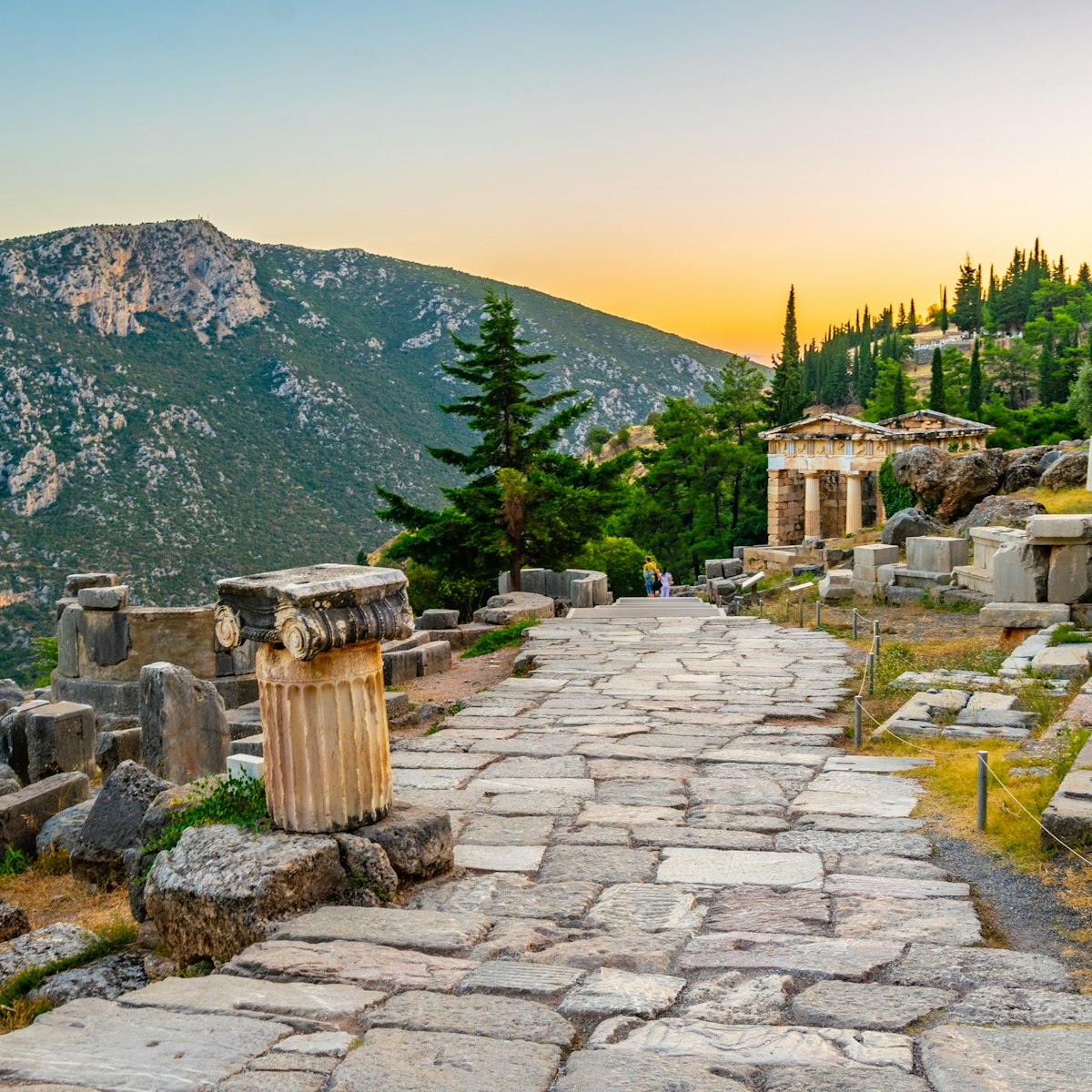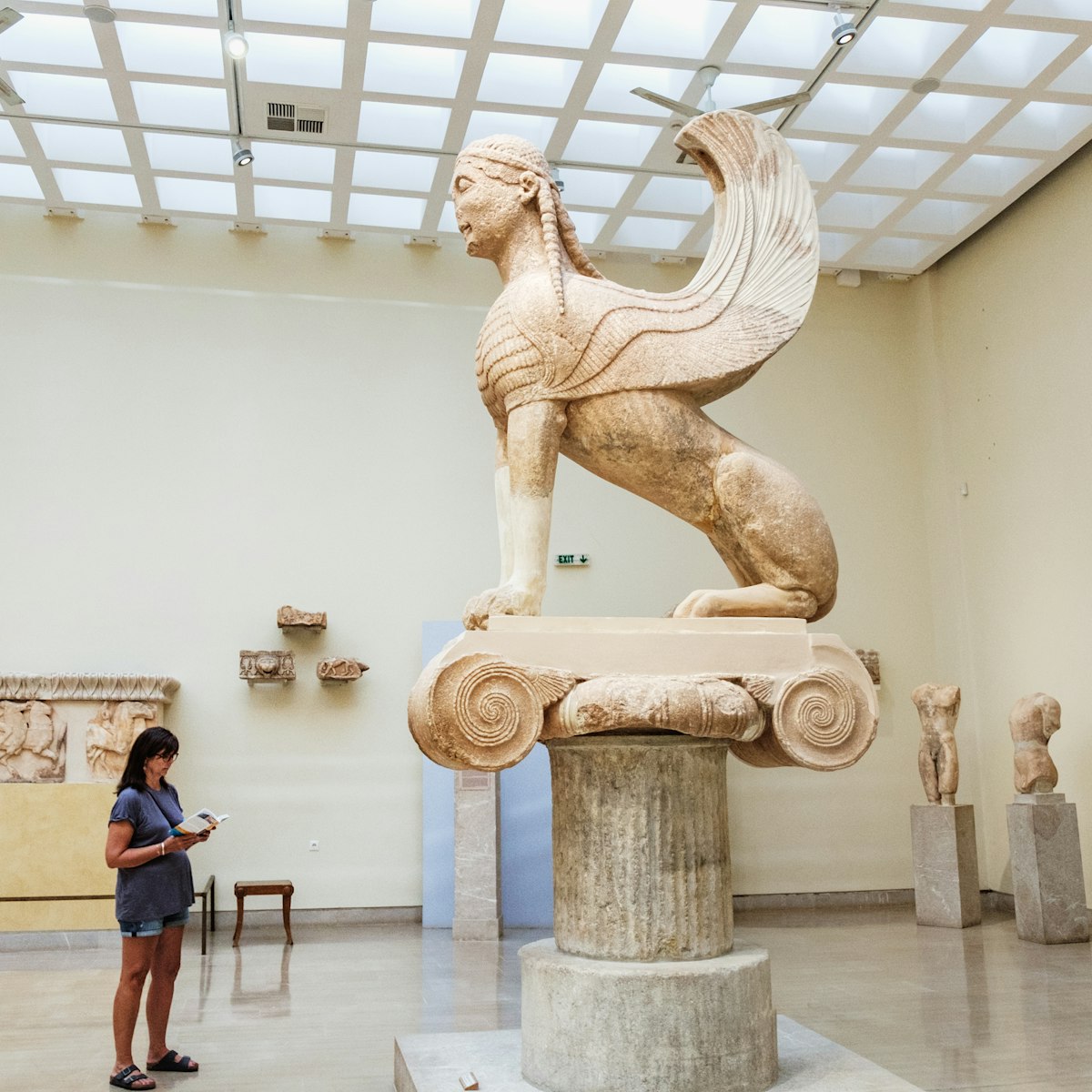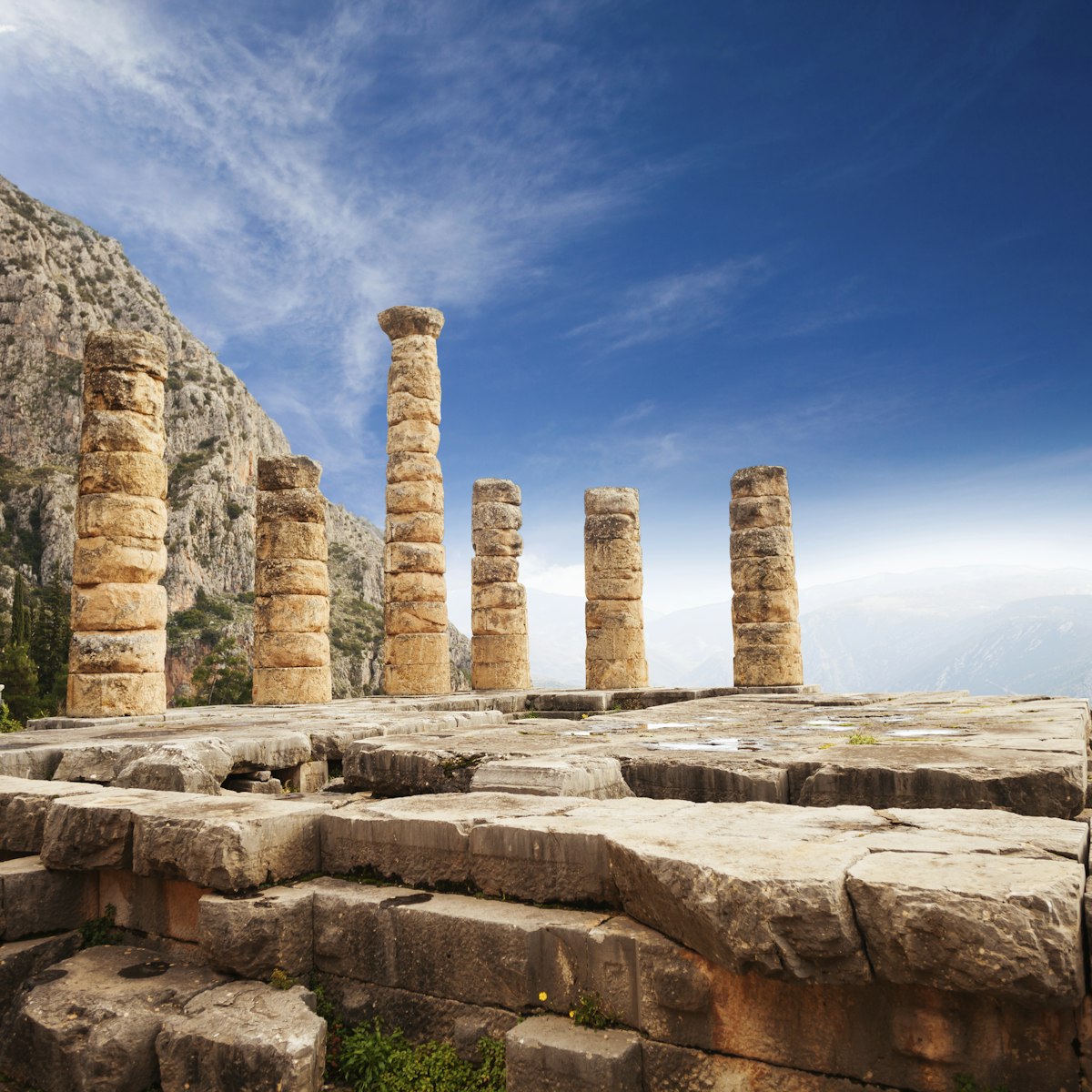
Serving as the heart of Ancient Delphi, the hillside Sanctuary of Apollo is where pilgrims would journey to hear prophecies from the god Apollo, voiced through his chosen oracle (a woman from the local area). The Sacred Way, the path that climbs to the complex's centrepiece Temple of Apollo, was lined in ancient times by treasuries and statues, erected by city-states including Athens and Sparta to thank Apollo and assert their own wealth and might. Some stand complete, most lie in ruins, but together they form a magnificent spectacle.
History
The Greeks told many stories to explain the origins of Delphi. The site was originally sacred to Gaia (also known as Ge), the ‘Mother Goddess’ whose cult centred on the Korykeon Cave, high on Mt Parnassos. After slaying a snake or she-dragon (known as Pytho) here, Apollo took the local name of Apollo Pythios.
For a thousand years, pilgrims flocked to his sanctuary for guidance. The height of its fame came between the 6th and 4th centuries BCE, after the Amphictyonic League, a federation of 12 tribal states, took control of the sanctuary following the First Sacred War (595–586 BCE). As an autonomous state, Delphi earned great prosperity from benefactors including the kings of Lydia and Egypt, and the Roman emperor Hadrian. Nominally neutral, it was a locus of political power.
After surviving fire in 548 BCE and earthquake in 373 BCE, the sanctuary was conquered by the Aetolians around 300 BCE, and by the Romans in 191 BCE. Although the Roman general Sulla plundered Delphi in 86 BCE, later emperors kept the oracle’s rituals alive well into the 2nd century. Ultimately its influence waned with the spread of Christianity, and the sanctuary was abolished by the Byzantine emperor Theodosius in the late 4th century.
By the 7th century, a new village, Kastri, had taken over the ancient site. It remained atop the ruins until late in the 19th century, when its inhabitants were paid to relocate to the newly constructed village of Delphi, allowing archaeologists to unearth the ancient site.
Touring the Sanctuary of Apollo
You'll need an hour minimum to take in all that the Sanctuary of Apollo has to offer. The following route takes in some of the site's top highlights:
The Sacred Way
After entering the sanctuary at its lowest point, beside the main road, you set off up the Sacred Way, laid out in its modern form by 19th-century archaeologists. The first of several stone pedestals you reach, on your right, held the Bull of Kerkyra (Corfu). Just beyond it, on the left, are the remains of the Spartan Victory Monument (an offering to the admiral Lysander). Further on sits a small conical stone known as the Omphalos, the 'navel' of the ancient Greek world.
Sphinx of Naxos, Rock of the Sibyl and Stoa of the Athenians
Northeast of the reconstructed Athenian Treasury stands a portion of the column that supported the Sphinx of Naxos, displayed in the on-site museum. Near it, find the Rock of the Sibyl, where Delphi's earliest prophetess made her predictions. A few steps away, behind three columns from the Stoa of the Athenians, the remarkable Polygonal Wall once supported the terrace of the second Temple of Apollo (548 BCE). Look closely, and you’ll realise it’s covered with minutely carved inscriptions.
Temple of Apollo
As the home of Apollo himself, the Temple of Apollo dominated the entire sanctuary. Its surviving incarnation, from the 4th century BCE, contained a statue of the god, guarded by an eternal flame, and was where the Pythia (oracle), the god’s mouthpiece, delivered her pronouncements. Its vestibule bore the so-called Delphic Maxims, including ‘Know Thyself’ and ‘Nothing in Excess’, which Socrates mentioned in Plato's Protagoras. Congregations gathered not inside the temple, but out in the open air.
Serpentine Column
Immediately east, the replica of the Serpentine Column, or Tripod of the Plataeans, was erected in 2015. The original bronze column commemorated the Greeks who defeated the Persian Empire at the Battle of Plataea (479 BCE). Removed by Constantine the Great in AD 324, it now resides at the Hippodrome of Constantinople, in modern Istanbul.
Theatre and Castalian Spring
Above the temple, the well-preserved 4th-century-BCE theatre was restored by Pergamene king Loukumenes II during the 2nd century BCE. Plays were performed here during the Pythian Festival, staged every four years. The views from the top row are breathtaking.
East of the Sanctuary of Apollo, a paved path parallel to the main road leads to the Castalian Spring, where pilgrims cleansed themselves before consulting the oracle.
Tickets and other practicalities
The entrance fee to the Sanctuary of Apollo, which is part of the wider Ancient Delphi complex, is €12. This ticket also includes access to Delphi Archaeological Museum. Entrance to the site is free during every first Sunday of the month from November 1st to March 31st.
To avoid the summer heat (and year-round crowds), aim to visit early morning or late afternoon, allowing at least an hour to explore the site in full. Whenever you visit, be sure to check opening times ahead, as hours can vary.
 Publish for free
Publish for free

 zzdtravel
zzdtravel


















